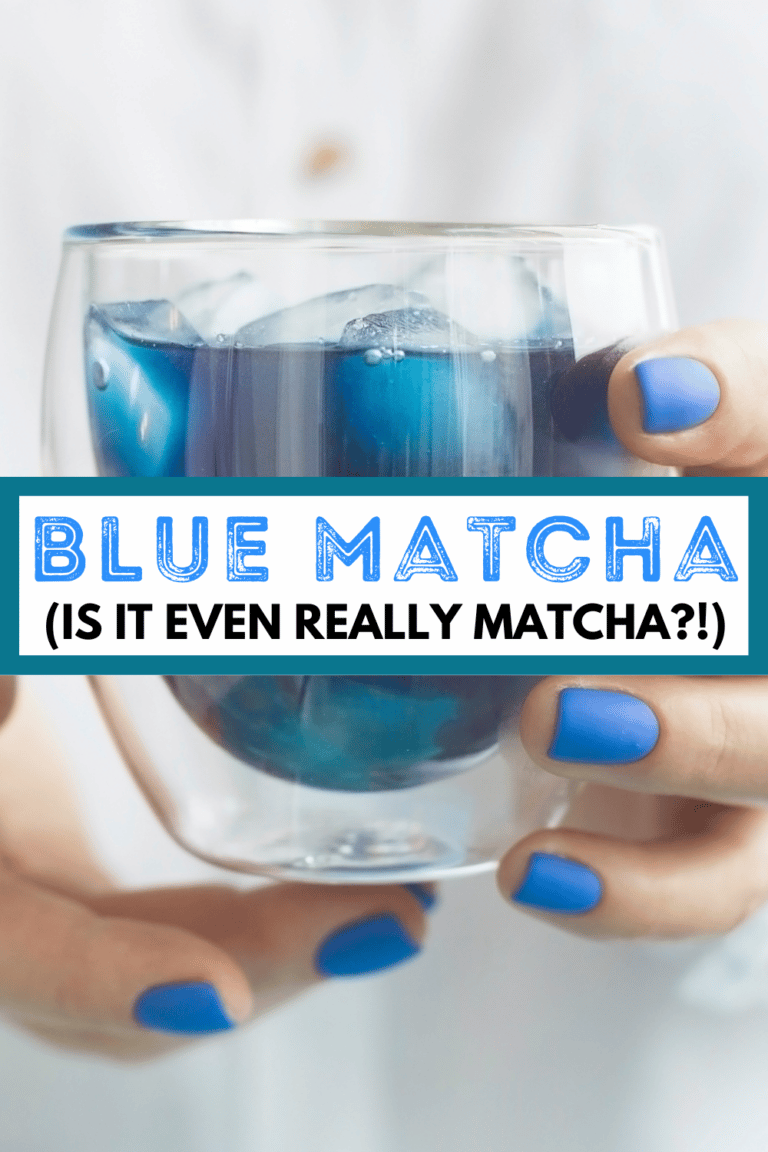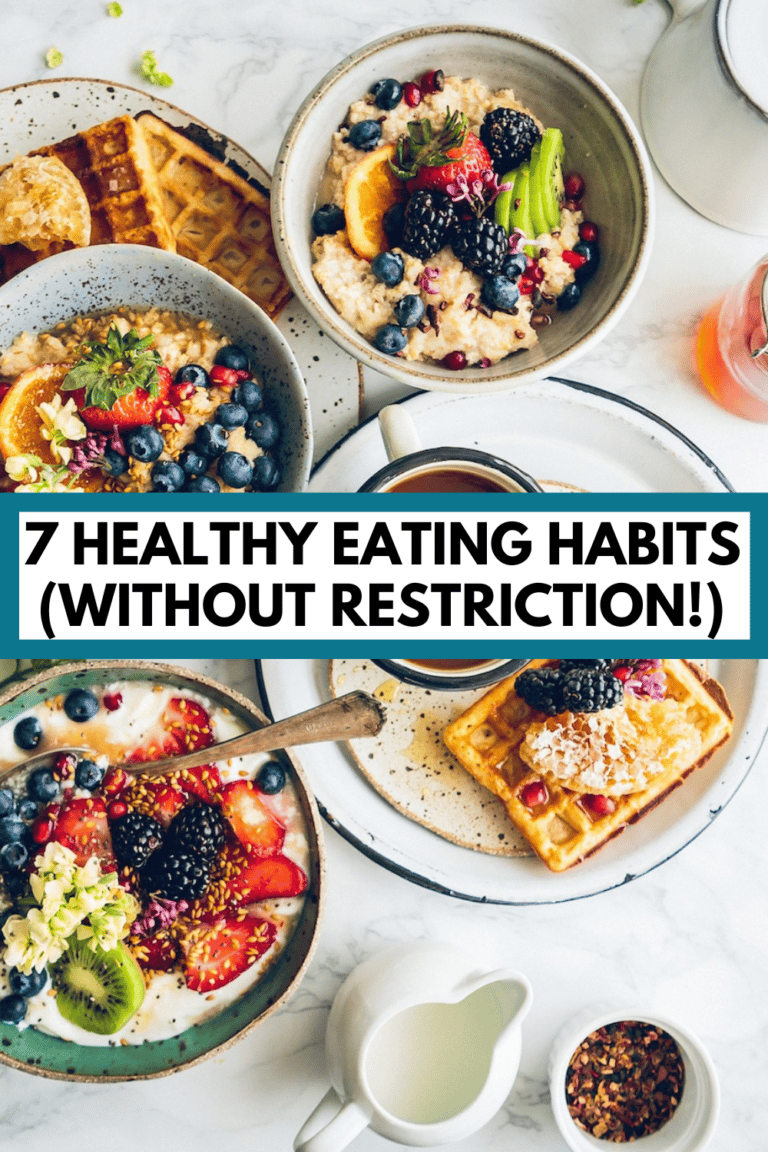Butterfly Pea Tea: The Benefits of Blue Tea
You’ve seen this vibrant blue tea all over social media, but what is butterfly pea tea? And do butterfly pea flowers help with weight loss or have any other benefits? Side effects? I’m a registered dietitian and I’m going to see what the science says about butterfly pea flower tea, so you can decide for yourself if you want to include it in your diet.
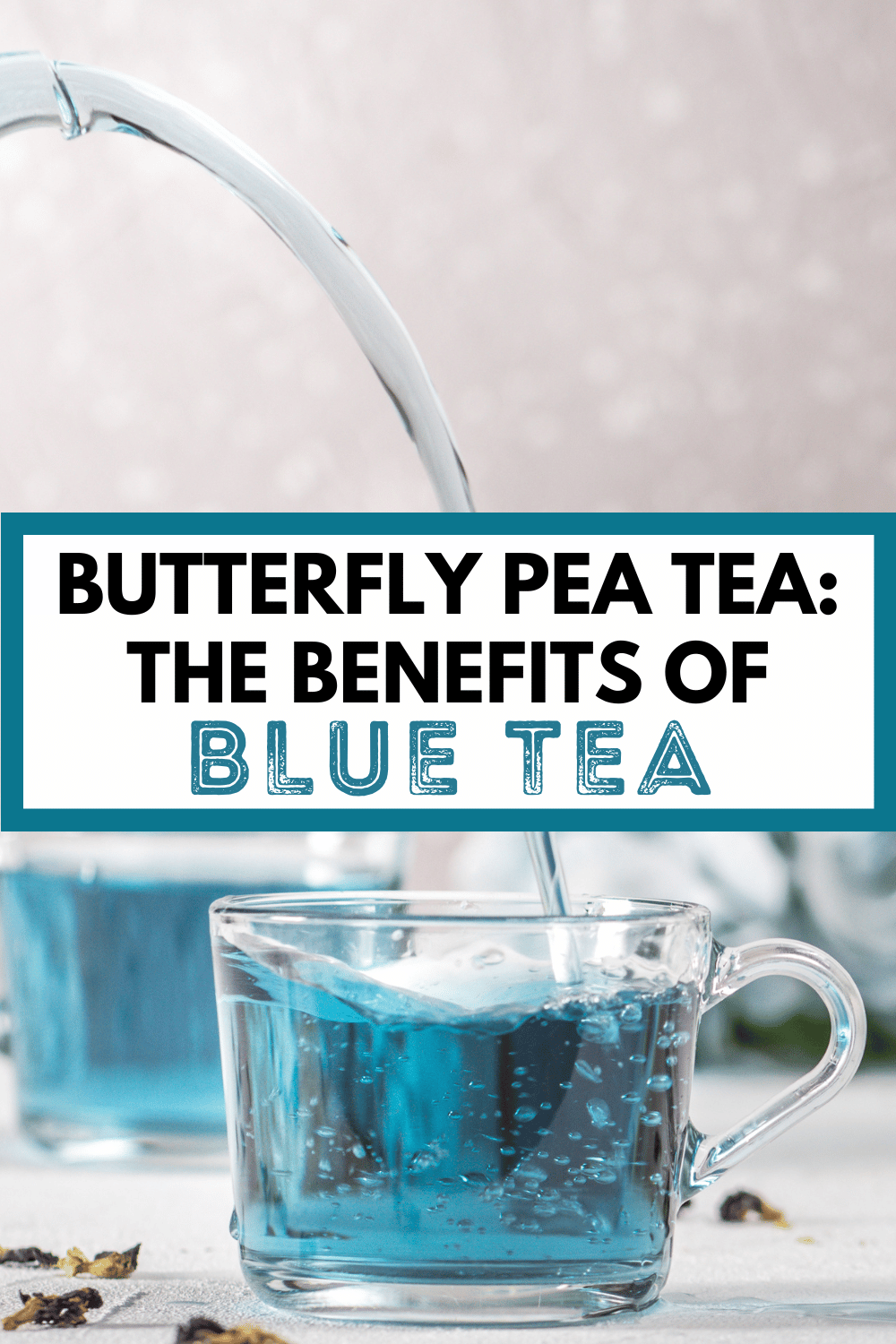
What is Butterfly Pea Tea
Butterfly pea tea is an herbal tea made from dried, ground butterfly pea flowers. These flowers of the Clitoria ternatea plant(native to Asia) were traditionally grown for use as a natural dye. They’re often still used to color foods, drinks, cosmetics, and textiles.
As an herbal tea, butterfly pea flowers have long been used in Ayurvedic medicine as a memory enhancer, antistressor, antidepressant and sedative agent.
And due to their beautiful hues, they’ve recently picked up popularity on social media.
The good news is that with this renewed interest in butterfly pea flowers, they’ve become the subject of some emerging studies, too.
Butterfly Flower Nutrients
Like most herbal teas, brewed butterfly pea tea (unsweetened) doesn’t contain any protein, fat, carbohydrates, or calories. But macros aren’t the only nutrients that matter!
Research is suggesting that the Clitoria ternatea plant is rich in antioxidants, like kaemphferol, p-coumaric acid, and delphinidin-3,5-glucoside.
Butterfly pea flowers also seem to be a good source of anthocyanins like ternatins. These ternatins not only give the flowers their beautiful, blue color, but some in vitro studies suggest that they also may be anti-inflammatory and inhibit the growth of cancer cells.
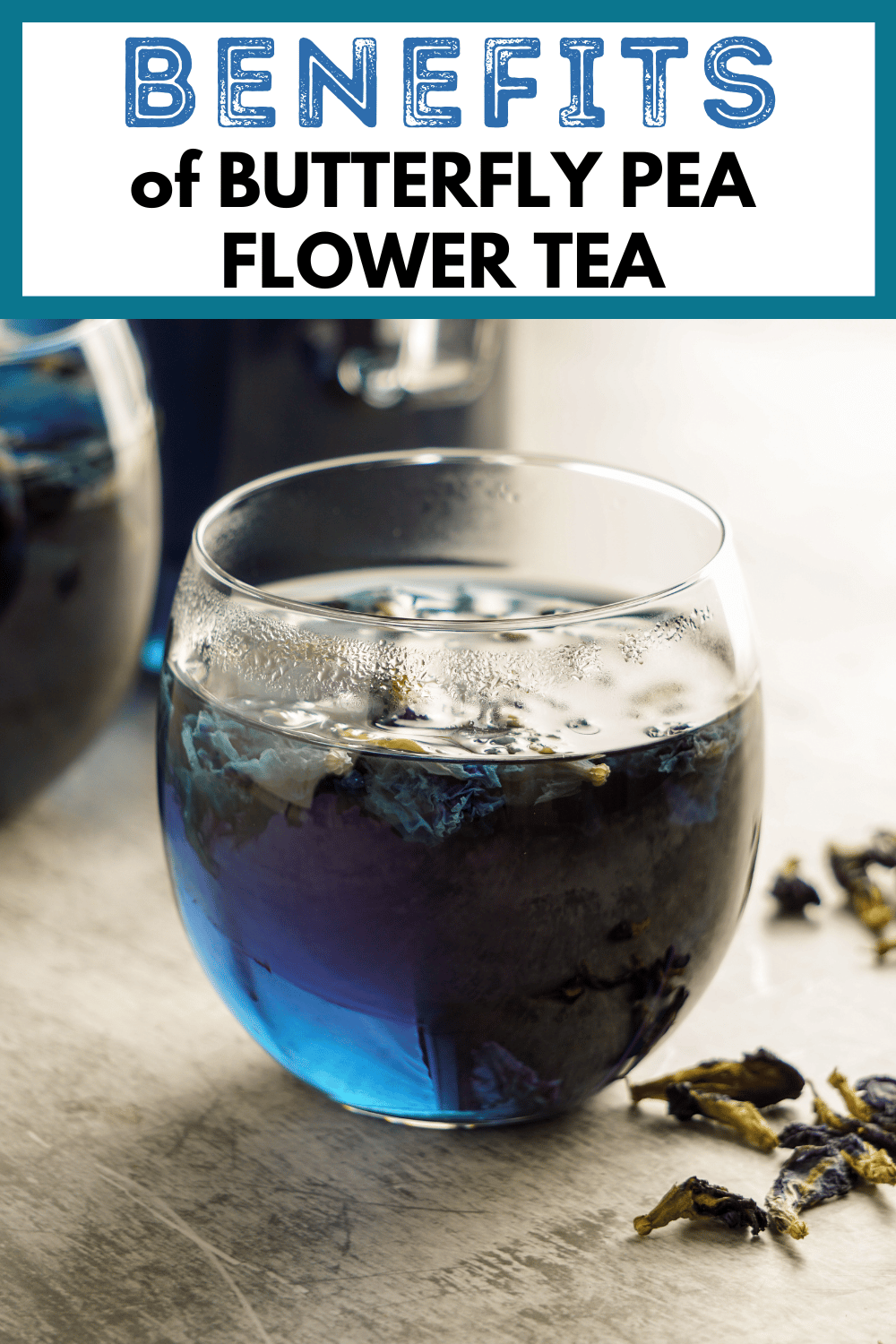
Potential Butterfly Pea Tea Benefits
Before diving into potential benefits, let’s be clear that most of these benefits are indirect. Specific butterfly pea flower research is limited — in both quantity and quality. So the majority of benefits are associated with properties of C. ternatea plants, like the ternatins and antioxidants, or inferred from limited test tube or animal studies.
Knowing more research is necessary, let’s check out some of these potential benefits:
Prevention of Age-Related Diseases
One study suggests that the antioxidants in butterfly pea flower extract may help protect against glycation and oxidative damage. This can help play a preventative role against age-related diseases (including diabetes) and their complications, including DNA oxidative damage.
Cancer-Fighting Antioxidants
We know that butterfly tea flower extracts can be a good source of antioxidants, like kaemphferol, p-coumaric acid, and delphinidin-3,5-glucoside. But there are some studies suggesting these antioxidants may fight or inhibit the growth of cancer cells.
Kaemphferol is an antioxidant that an in vitro study showed may kill cancer cells.
Delphinidin-3,5-glucoside is another antioxidant that showed it may specifically kill colorectal cancer cells.
Remember: these are not high quality studies and we need more research.
Improved Skin and Hair Health
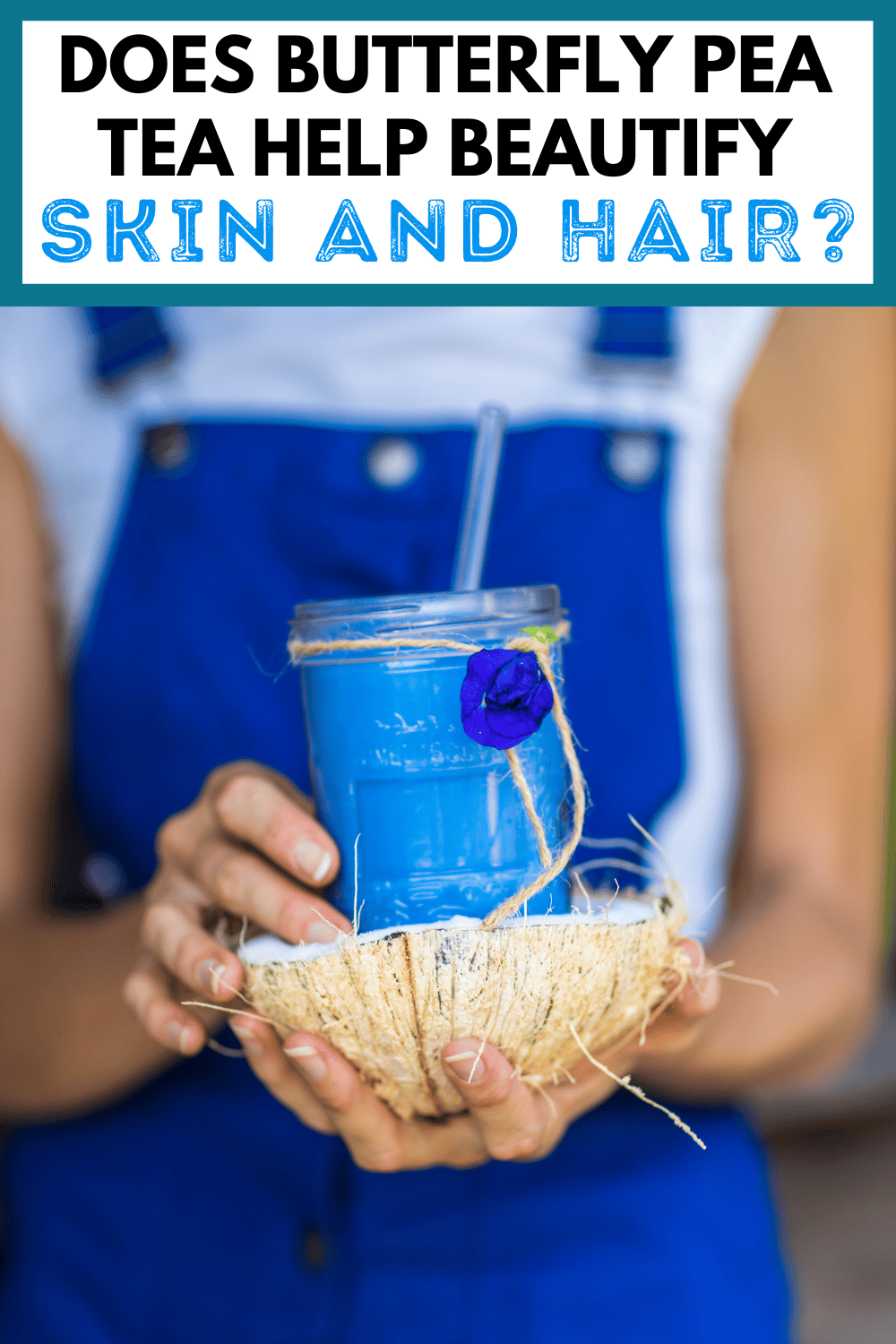
The beauty industry has latched on to butterfly pea flowers, touting beneficial effects for hair and skin health. And there may be a little merit in what they have to say.
Just as antioxidants can be powerful for our overall health (including the cancer-fighting properties mentioned above), they can also play a role in both hair health and dermatology.
Additionally, a couple of studies have shown that butterfly pea extract may increase skin hydration and promote hair growth.
One study even showed that C. ternatea leaf extract showed significant hyaluronidase inhibitory effects, which may make it potentially useful for wound management.
Again, we need more research, period, but particularly higher quality research to show just how butterfly pea flower extracts can be useful in skin and hair care.
Better Blood Sugar Control
There are some interesting, small studies indicating that butterfly pea flower may possibly reduce blood sugar and insulin levels, reducing the risk of diabetes. One rat study found that butterfly pea flower extract reduced blood sugar levels in rats with diabetes compared to the control group.
Another study showed that the high antioxidants found in butterfly pea flowers may protect against cell damage and other diabetes-related complications.
None of these are high quality studies, though. We need more research to see if butterfly pea flower extracts are helpful for blood sugar management.
Blue Tea for Weight Loss?
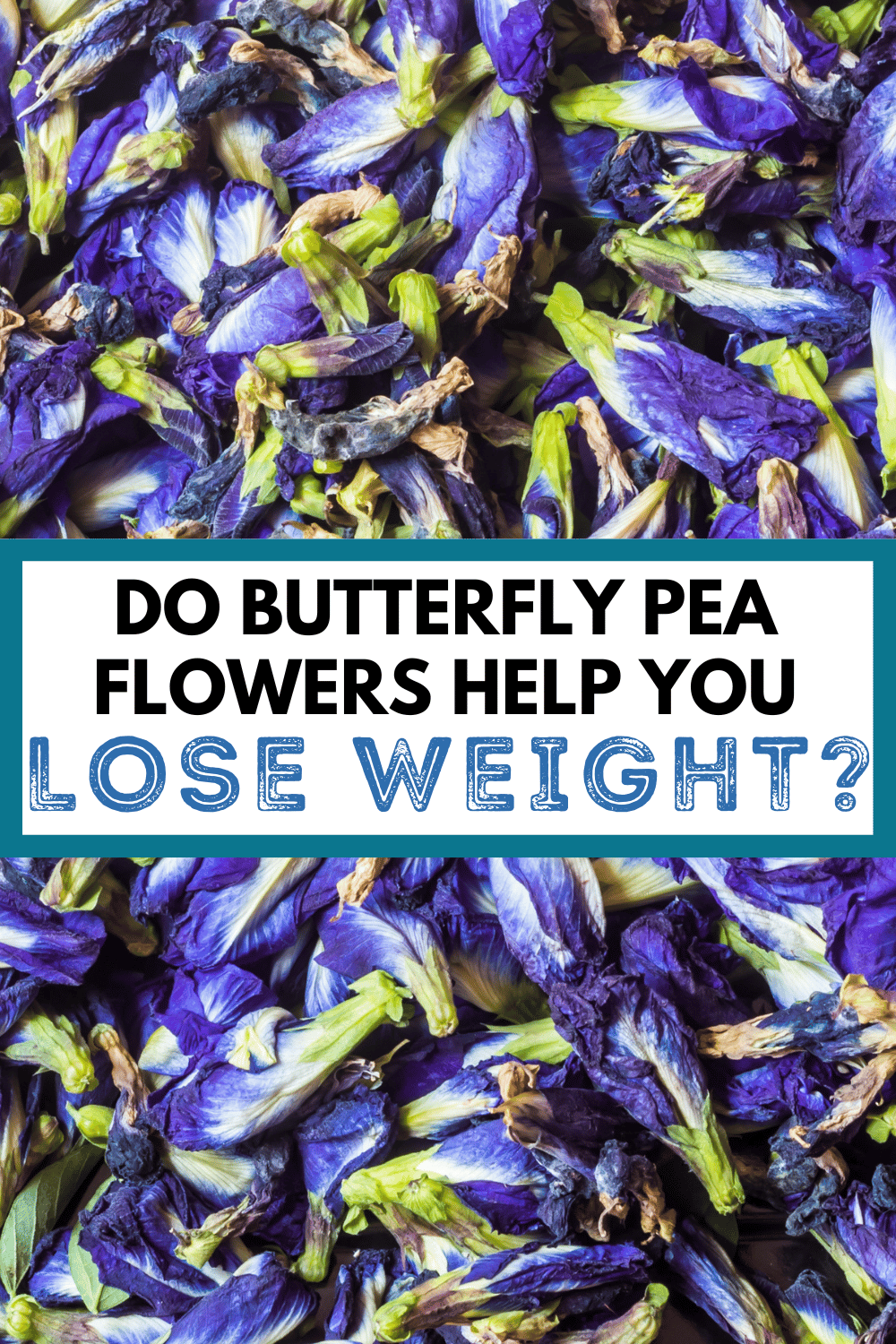
Will this pretty blue tea help you lose weight? Let’s check some studies and the science.
Slowed Fat Cell Formation
Some older studies (most done in test tubes and mice) found that the ternatins found in butterfly pea tea may slow fat cell formation.
Decreased Post-Meal Blood Triglyceride Levels
High-fat meals can lead to postprandial lipemia, or an increase in circulating triglycerides after the meal. This effect tends to be greater in those with obesity or overweight.
One study found that C. ternatea extract decreased these post-meal higher circulating triglycerides and free fatty acids. They also noted improved plasma antioxidant status and glutathione peroxidase activity in overweight and obese study participants.
Hydration and Weight Loss
One reason some folks may anecdotally report weight loss with butterfly pea tea may actually simply be because it’s helping them stay hydrated.
Butterfly pea tea is an herbal tea, brewed with water. And science has proven that water can bring some potential weight loss benefits:
- Metabolism may increase after drinking water. Two studies showed a slight energy expenditure increase within one hour of drinking 500 ml of water. One study showed a 24% metabolic rate increase and another study showed a 30% increase. (The latter they determined to equate to about 24 calories expended per 500 ml consumed).
- Multiple studies link drinking water before meals to weight loss, even when compared to just a calorie deficit alone without water before meals.
- Some studies demonstrate that people who are losing weight who drink a lot of water have more weight loss, fat loss, and appetite suppression than those pursuing weight loss who don’t drink as much water.
Bottom line? While drinking blue tea may not hinder your weight loss efforts, there’s not enough evidence to say that butterfly pea flower extracts help, either.
Ultimately an energy deficit is what’s needed for weight loss – with or without butterfly pea tea or any other supplements, like greens powders.
Butterfly Pea Side Effects
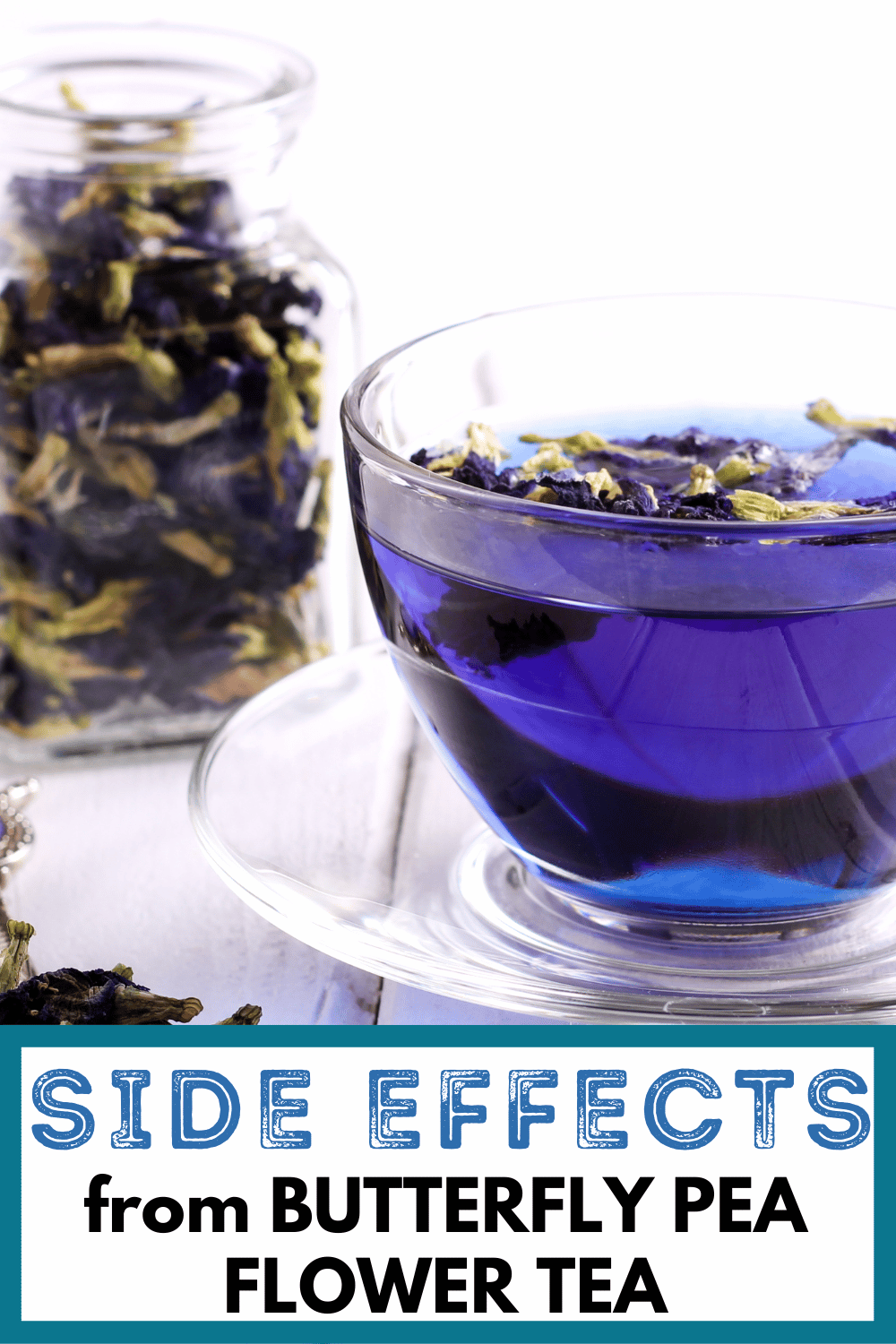
Generally, butterfly pea is considered safe (in moderation).
Some folks anecdotally report side effects like nausea, upset stomach, stomach pains, and diarrhea after consumption. But unfortunately, just as we have limited research show the benefits of consuming butterfly pea flowers, we’re limited in our research showing side effects, too.
As with any dietary change or supplement, please consult with your doctor before starting anything new (including butterfly pea tea). Especially if you have any underlying health conditions or take any medications.
Color Changing Tea
Why does butterfly pea tea change color?
If you’re unfamiliar, blue tea can change to show more purple and pink hues. But why?
Well, the anthocyanins (ternatins) in the butterfly pea flowers create the vivid blue. When you add something acidic, like lemon or lime juice, the pH changes, and that vivid blue transforms into a deep purple color.
And while this is fun to see (and a cool pH science lesson!), it has another perk. Adding citrus juices adds more flavor to the tea (which has a fairly subdued, slightly earthy, benign flavor).
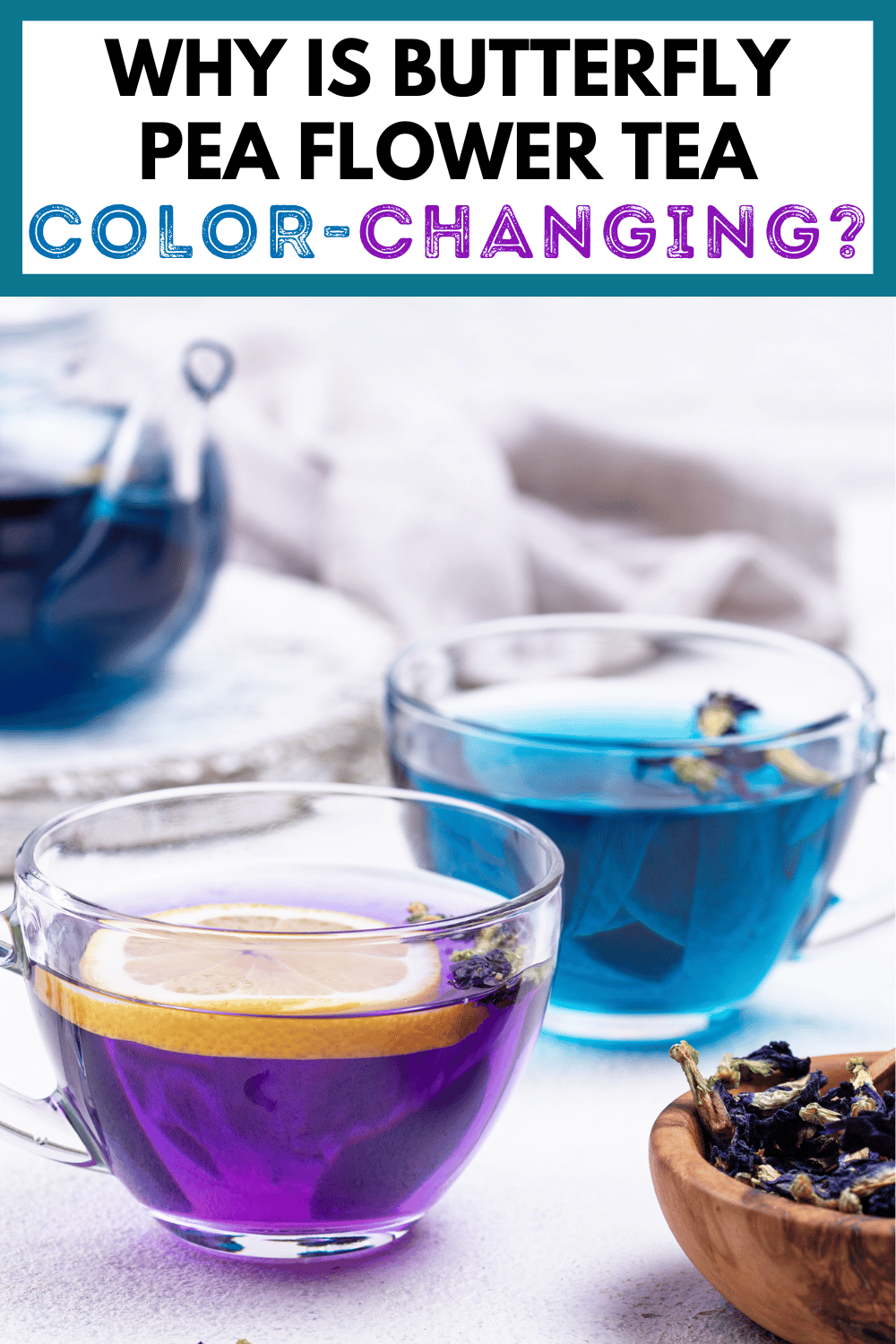
How Do You Use Butterfly Pea Flowers?
Most folks typically consume butterfly pea flower as an herbal tea. To make butterfly tea, add 1 to 2 teaspoons of dried, ground butterfly pea flowers to 1 cup of hot water and stir until dissolved. Check and follow the instructions on your package — 1 teaspoon should do it, but if it’s a weaker powder or mixed with something else, you may need 2 teaspoons.
Alternatively, you can steep dried, whole butterfly pea flowers (about 1 teaspoon) in 1 cup of hot water for 10-15 minutes. Then strain the flowers out and enjoy.
You can drink butterfly tea hot or iced. You can also add additional flavorings, like lemon, vanilla, ginger, or cinnamon, and sweeten to your personal preference, too.
Additionally, you may find butterfly pea flower in various cosmetics and toiletries, due to their possible skin and hair health benefits, too.
Butterfly Pea Tea Final Thoughts
Final thoughts on butterfly pea tea? Emerging research shows it’s a good source of antioxidants and anthocyanins like terpatins, which give it its color. But in general, research is lacking. While butterfly pea flower extracts have nutrients that may associate with possible health benefits, we need more research.
Will it help with weight loss? Maybe…but it’s definitely not going to be the magic pill you may have been hoping for.
Bottom line, it’s generally safe, so if you enjoy herbal teas or want to drink a pretty blue latte or lemonade, have at it!



